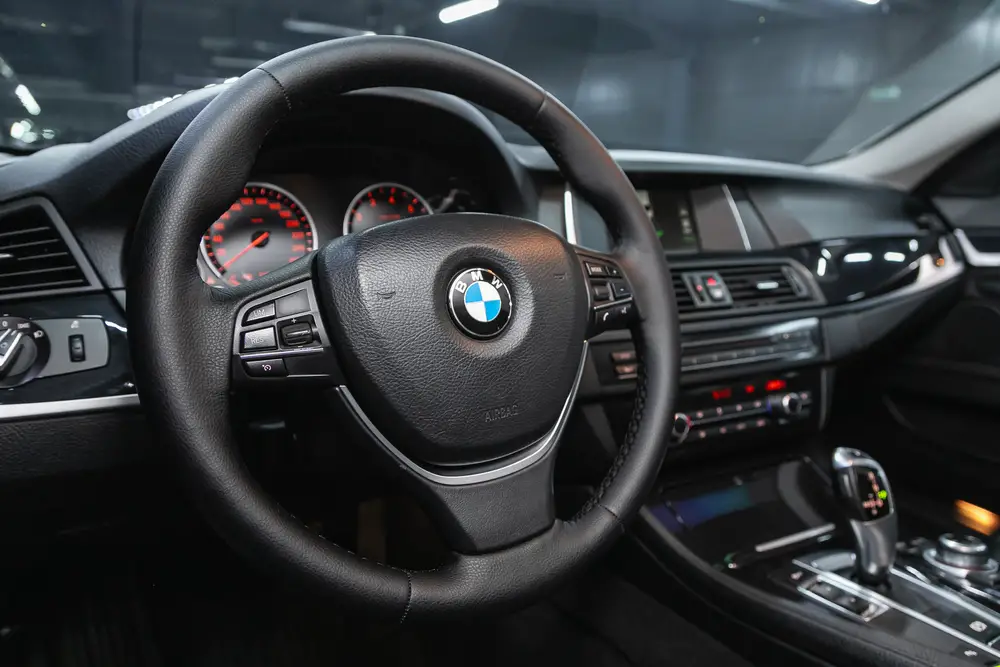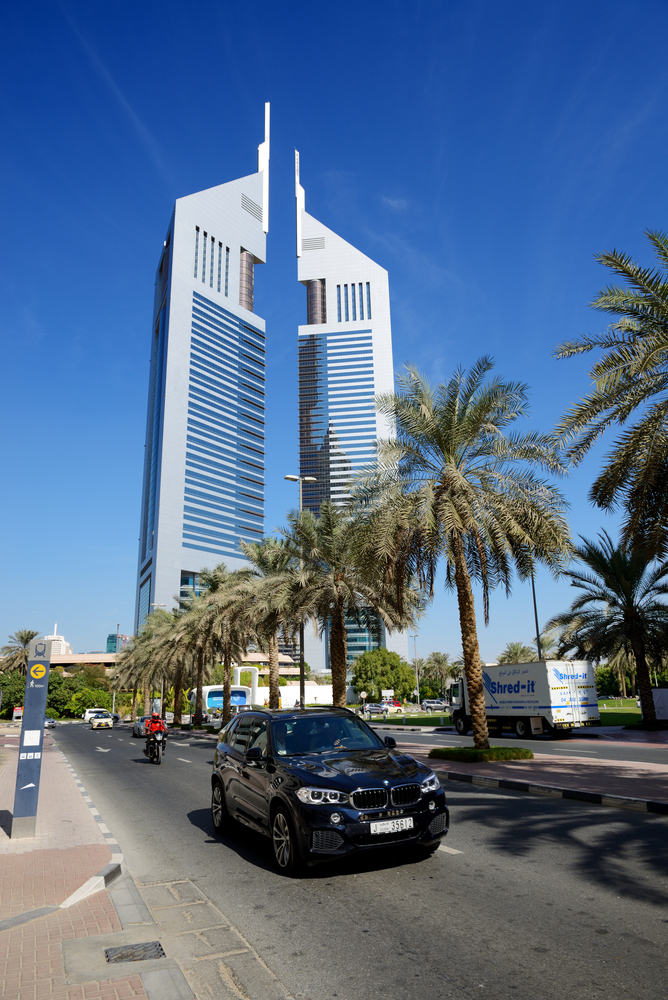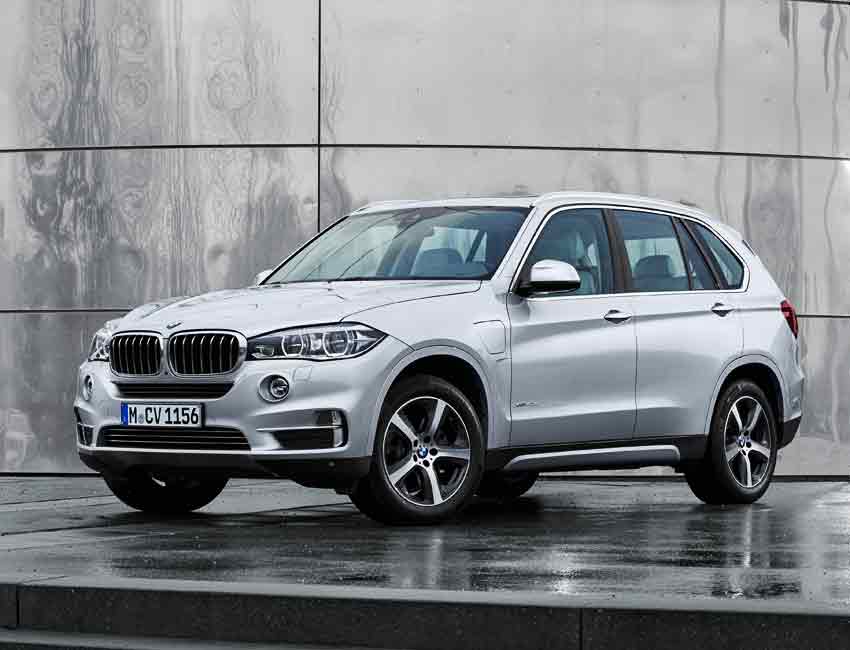BMW M Carbon Ceramic Brakes – The Complete Guide
BMW M Carbon Ceramic Brakes at a Glance
- What are M Carbon Ceramic Brakes?
- Cost of the M Carbon Ceramic Brakes
- Why are the M Carbon Ceramic Brakes Expensive?
- M Carbon Ceramic Brakes Versus M Compound Brakes
- M Carbon Ceramic Brake Disc Design and Special Features
- Front Axle of the M Carbon Ceramic Brakes
- Rear Axle of the M Carbon Ceramic Brakes
- Technical Data on the M Carbon Ceramic Brakes
- Advantages of the M Carbon Ceramic Brakes
- Anti-Corrosion Property of the M Carbon Ceramic Brakes
- Braking Performance and Effect of the M Carbon Ceramic Brakes
- Cleaning and Care of the M Carbon Ceramic Brakes
- M Carbon Ceramic Brakes on the Race Track
- M Carbon Ceramic Brake Pad Wear and Tear

What are M Carbon Ceramic Brakes?
M Carbon Ceramic brakes are made from durable carbon compound ceramic materials to withstand extreme temperatures from the high-performance demands of the track. Also known as the BMW C/SiC (Carbon Fiber Reinforced Silicon Carbide) Brakes, the M Carbon Ceramic Brake discs are fabricated from carbon fibers. The brake calipers are painted in eye-catching gold adorn with the signature BMW M logo. The brake discs are manufactured by Brembo SGL Carbon Ceramic Brakes GmbH.
Cost of the M Carbon Ceramic Brakes
The M Carbon Ceramic Brakes can be added to selected BMW M models for an additional $8,500 to $9,250 as a Performance Option. 20-inch or greater M wheels must be ordered in conjunction with the M Carbon Ceramic Brake option on your new BMW. This is because the brake discs are larger on the front wheels and cannot fit into the stock wheels provided.

Why are the M Carbon Ceramic Brakes Expensive?
The production process of the Carbon Ceramic Brakes involves siliconizing the friction ring for 24 hours at 1,300 degrees. Then the carbon fiber-reinforced silicon carbide brake disc has a construction and development time of several weeks.
The production time spent and constructional materials needed are the leading causes which drove the M Carbon Ceramic Brakes retail price higher than conventional brakes. However, the price is justifiable as these brakes can endure much higher levels of wear and tear compared to the conventional brakes
M Carbon Ceramic Brakes Versus M Compound Brakes
The M Carbon Ceramic Brakes are lighter and better in performance than the M Compound Brakes or the conventional brakes.
Compared to the M Compound Brakes, the most significant advantage of the M Carbon Ceramic Brakes is their lightweight property. M Carbon Ceramic Brakes is 12.5 kg (about 27 pounds) lighter in rotating mass than the standard M Compound Brakes. The M Carbon Ceramic Brakes also offer more stability because the operational surface of the brake pads is significantly higher.

M Carbon Ceramic Brake Disc Design and Special Features
The M Carbon Ceramic Brake disc body can have visible cracked patterns (relaxed microstructure). This is typical for the M Carbon Ceramic Brake disc, and the cracks can remain visible during normal drive.
M Carbon Ceramic Brake Disc Components and Materials
The BMW M Carbon Ceramic Brake discs are made up of the following two types of materials:
- The support body with the cooling ducts has a sintered silicon carbide ceramic base that is reinforced with a high content of carbon fiber direction-oriented strands.
- The inner and outer friction coating has a much higher ceramic content.

M Carbon Ceramic Brake Disc Engravings
The M Carbon Ceramic Brakes have the following information engraved on the front and rear axle brake disc hubs:
- Serial number
- Part number
- Direction of travel
- Minimum weight (wear weight)
- Minimum thickness (wear thickness)
- Week/year of manufacture
Front Axle of the M Carbon Ceramic Brakes
Front Axle Brake Discs
The front axle brake disc hub is made of high strength aluminum alloy.
The friction ring width (swept area) of the front M Carbon Ceramic Brake disc is 88.8 mm (about 3.5 inches). This is larger than the M Compound Brake disc, which measures 76 mm (about 3.0 inches).
The diameter of the M Carbon Ceramic Brake disc is 410 mm (about 16.14 inches), and its thickness is 38 mm (about 1.5 inches).
Front Axle Brake Caliper/Pad
The M Carbon Ceramic Brake caliper at the contact surface of the swivel bearing is 5 mm (about 0.19 inches) less than the M compound brake caliper. This is because the Carbon Ceramic Brake disc has a 5 mm larger radius and friction ring.
Overall, the weight of the front brake caliper including the brake pad is 0.4 kg (about 0.88 lbs) heavier than the M Compound Brake caliper.
Rear Axle of the M Carbon Ceramic Brakes
Rear Axle Brake Discs
The rear axle brake disc hub is manufactured with high strength aluminum alloy, which is the same as the front axle brake disc hub.
The rear M Carbon Ceramic Brake disc has the same diameter as the M Compound Brake disc. However, the thickness is 2 mm (about 0.78 inches) greater.
Rear Axle Brake Caliper/Pad
The size of the M Carbon Ceramic Brake rear axle caliper and brake pads are the same as the M Compound Brakes.

Technical Data on the M Carbon Ceramic Brakes
| Designation | M Compound Brake System | M Carbon Ceramic Brake System | |
|---|---|---|---|
| Front Brakes | |||
| Brake Disc Diameter x Thickness | |||
| Friction Path / Friction Ring Width | |||
| Weight of Brake Disc | |||
| Weight of Brake Caliper and Pad | |||
| Rear Brakes | |||
| Diameter x Thickness, Brake Disc | |||
| Friction Path / Friction Ring Width | |||
| Weight of Brake Disc | |||
| Weight of Brake Caliper and Pads |

Advantages of the M Carbon Ceramic Brakes
The M Carbon Ceramic Brakes are highly durable, lightweight, and has a much longer lifespan compared to the conventional brakes.
Here’s is a list of Advantages of the M Carbon Ceramic Brakes
- More direct and spontaneous use of brake force
- High fading stability and resistance
- Large 16-inch front rotors
- 19.4 kg (about 42 lbs) weight reduction of the unsprung rotational wheel masses
- Brake pad lifespan lasts 2-3 times longer than conventional brakes
- Rotor lifespan lasts 3-4 times longer than conventional brakes
- Increased reliability for winter driving conditions with corrosion resistance
Anti-Corrosion Property of the M Carbon Ceramic Brakes
BMWs with conventional brake discs that have not been driven for an extended period and has low mileage, corrosion can take place. This is because the minimum load level required to start a brake disc’s self-cleaning mechanism cannot be reached.
The M Carbon Ceramic Brake discs are not as susceptible to corrosion because rust films do not form on the friction ring constructed from grey-cast iron. In addition, the new M Carbon Ceramic Brake disc’s friction surface is covered with a stress-relief coating.

Braking Performance and Effect of the M Carbon Ceramic Brakes
Brake Condition | Brake Performance |
|---|---|
| Cold brakes and tires | Depending on the braking situation, a spontaneous, hard brake effect can reduce the stopping distance slightly |
| Warm brakes and tires | When the brakes and tires are in a warm state, performance of the braking effects will significantly improve |
| Brakes in wet condition | Without a dry brake situation, a slight deceleration of braking force can be observed. Also, during low speed and cautious braking, an audible sound may occur with the wet M Carbon Ceramic Brakes |
| Brakes during winter operation | Without a dry brake situation, a slight deceleration of braking force can be observed. Also, during low speed and cautious braking, an audible sound may occur with the wet M Carbon Ceramic Brakes |

Cleaning and Care of the M Carbon Ceramic Brakes
When taking your BMW with M Carbon Ceramic Brakes to a car wash, it is important to clean both brake discs and calipers with a steam jet or high-pressure cleaner. This prevents the formation of encrustations or deposits of salt crystals when the car is parked after cleaning.
If wheel cleaner is used, make sure it is only applied to the wheel rims and does not touch the brake discs or the calipers.
Use a wheel cleaner that is acid-free and pH balanced, which is safe on the BMW standard alloy and aluminum rims. If you have custom wheels with powder/decorative coating or any other special materials, be sure to check if the solution is safe for the material. Use a brush with extra-soft and scratch-free bristles to detail the rims if safe and necessary but avoid the brakes. Dry the wheels with a soft, lint-free, and non-scratch microfiber cloth that does not harm the wheel surface. You can go one step further by cleaning the tires separately with a non-toxic, environmentally-friendly tire dressing care and microfiber cleaning pad.
M Carbon Ceramic Brakes on the Race Track
On the race track, the M Carbon Ceramic Brake discs may be subject to oxidative wear when the discs are repeatedly heated to temperatures of 600 degrees and over due to hard braking effects. As a result, the fibers within the brake discs can burn and will up become lighter, not thinner.

M Carbon Ceramic Brake Pad Wear and Tear
After about 1,000 km (approx. 621 miles) of driving, the brake discs and pads can achieve favorable wear and contact pattern.
With silicon carbide friction coating on the M Carbon Ceramic Brake pads, the brake pads will wear out very slowly under normal (ideal) driving. The M Carbon Ceramic Brake disc should last through the lifespan of the car itself since the silicon carbide friction coating is nearly non-wearing.
The racetrack, however, can wear out the brake discs faster. As mentioned earlier, when the M Carbon Ceramic Brake discs are frequently heated to temperatures of 600 degrees or higher, the brake disc fibers can burn up sooner and result in oxidative wear.
M Carbon Ceramic Brake Disc Wear Characteristics
Comparing to the M Compound Brake Disc, the M Carbon Ceramic Brake disc has a much longer lifespan and can last the service life of the vehicle in ideal everyday driving. Over time, oxidation of the carbon fibers and sporting driving styles can cause the brake disc to lose weight and strength.

Four Wear Indicators of the M Carbon Ceramic Brake Disc
There are four indicators to check for signs of wear on the M Carbon Ceramic Brake disc:
- Check the disc surface for visible signs of wear and damage
- Three wear indicators are appearing as dark circular spots per friction surface located at every 120 degrees on the disc. When these indicators are subjected to high levels of oxidative wear, these wear indicator marks will become exposed
- Minimum permitted brake disc weight should be 7954 g (about 17.5 lbs)
- Minimum brake disc thickness should be 37.85 mm (about 1.49 inches)

Why is the Cool-Down Lap Important for the M Carbon Ceramic Brakes?
After driving with high speed or on the racetrack, it is essential for the M Carbon Ceramic Brakes to cool down with the airstream. If your BMW is parked while the brake discs are close to 500 degrees, heat can transfer throughout the brake system and damage brake pads, back plate, damping plates, brake calipers, piston seals, and the dust shields.
By performing a cool-down lap, the airstream can bring the temperature of the M Carbon Ceramic Brake discs down below 200 degrees.
Wet M Carbon Ceramic Brakes
Although the braking power of the M Carbon Ceramic brakes is applied precisely in all weather conditions due to the brake material’s strength and durability, when driving in the rain, during wet road conditions, or right after a car wash, the M Carbon Ceramic Brake discs and pads will experience a drop in their friction coefficient value. The braking effect may be equivalent to that of a conventional brake system when impacted by moisture and road salt.
This can be compensated by applying more pressure on the brakes until the pads and discs have dried out completely. At times, wet M Carbon Ceramic Brakes can cause an audible operational noise when the car brakes towards a stop. However, this does not affect the brakes’ performance, operational safety or stability.

How do BMW Carbon Ceramic Brakes Work?
Under the hood, these brakes are quite a marvel. The carbon fibers and ceramic compound undergo intense heat (approx. 2000°C) and pressure to form a brake disc that’s tough yet light. This process, called pyrolysis, leads to a remarkably durable disc that can withstand the rigors of high-speed braking with ease. The beauty is in the details, and these brakes ensure every stop is as smooth as the ride itself.
The Making of BMW Carbon Ceramic Brakes
BMW’s carbon ceramic brakes are not just created, but meticulously engineered. The production process involves several stages, each crucial in ensuring these brakes stand up to the BMW standard of excellence. Let’s break down the process, from the blend of raw materials to the finished product ready to take on the roads.
The Superiority of BMW Carbon Ceramic Brakes
Longer Lifespan
When it comes to longevity, BMW carbon ceramic brakes take the crown. These robust brakes can last up to 93,000 miles with proper care, significantly longer than their steel counterparts. So, while the upfront cost might seem steep, they’re a worthwhile investment for the longevity they offer.
Unmatched Heat Resistance
These brakes are crafted to excel under extreme conditions. They can withstand temperatures up to 1600°C – that’s hotter than molten lava! This exceptional heat resistance ensures reliable braking performance, even during high-speed descents or track days.
Superior Brake Fade Resistance
Brake fade, or the reduction in stopping power due to overheating, is virtually non-existent with BMW carbon ceramic brakes. Their superior heat resistance allows them to maintain their performance, even under the most demanding conditions. The result? Consistent, reliable stopping power, regardless of how hard you’re pushing your BMW.
Frequently Asked Questions about BMW Carbon Ceramic Brakes
Are BMW carbon ceramic brakes worth it?
Absolutely! BMW carbon ceramic brakes offer superior performance, longevity, and heat resistance. While they may be pricier initially, their durability and reliability can save you money in the long run.
Can BMW carbon ceramic brakes be repaired?
Yes, but they require professional servicing by a BMW certified technician. Regular inspections can help spot potential issues early, preventing more costly repairs down the line.
Do BMW carbon ceramic brakes make a difference in regular driving?
Definitely. While their benefits are particularly noticeable in high-performance scenarios, they offer consistent and reliable braking power in everyday driving situations as well.
Can you use regular brake pads with BMW carbon ceramic brakes?
No, regular brake pads cannot withstand the intense heat generated by these brakes. BMW recommends using specially designed brake pads to ensure optimal performance.
Are BMW carbon ceramic brakes noisy?
No, they’re designed to provide smooth and quiet braking. However, any unusual noise should be addressed by a professional technician immediately.
How often should BMW carbon ceramic brakes be replaced?
With proper care and maintenance, these brakes can last up to 93,000 miles before requiring replacement. However, this depends on individual driving habits and conditions.
You Might Also Be Interested In…
Can BMW Charge at Tesla?
Can BMW Charge at Tesla? As of now, BMWs can't directly charge at Tesla Supercharger stations because Tesla uses a proprietary connector. However, with the right third-party adapter, BMW owners might be able to make it work, but it's always good to double-check...
Are BMW Motorcycles Reliable? A Comprehensive Dive into the World of BMW Bikes
Are BMW Motorcycles Reliable? BMW motorcycles are renowned for their top-notch engineering and build quality, making them a reliable choice for riders around the world. Whether you're hitting the open road or tackling rugged terrains, you can count on a BMW to be a...
Can BMW Take 87 Gas? Discover the Truth Behind the Octane Debate!
Can BMW Take 87 Gas? Certainly! While a BMW can technically run on 87 octane gas, it's not the optimal choice. BMW recommends using premium fuel for most of their models to ensure the best performance and longevity of the engine. So, while it might be tempting to...
Embrace the Future with the BMW Genius Program
You know, they often say that 'knowledge is power'. Well, that's never been truer than in the case of BMW's groundbreaking initiative - The BMW Genius Program. Tailor-made for every BMW enthusiast out there, this program sheds light on the latest technological...
A Comprehensive Dive into the BMW N63: A Blend of Power, Performance, and Precision
Hey there, gearheads! Welcome to a deep dive into the fascinating world of one of the most renowned engines out there: the BMW N63. We're about to embark on an exciting journey, exploring the good, the bad, and the powerful of this engineering marvel. Are you ready...
How BMW TPMS Works: A Comprehensive Guide
When it comes to innovation and performance, BMW never falls short. But how well do you know the intricacies of your vehicle, specifically the Tire Pressure Monitoring System (TPMS)? Let's take a journey to understand how BMW TPMS works. How BMW TPMS Works So,...
Can BMW Keys Be Reprogrammed? Your Comprehensive Guide
Ah, the wonders of technology! It's in everything these days, from the appliances in our homes to the phones in our hands. And of course, it's a big part of our beloved vehicles too, particularly in prestigious brands like BMW. One feature that often leaves car...
How BMW VANOS Works: A Comprehensive Guide to Variable Valve Timing
Introduction Welcome to our comprehensive guide on the fascinating topic of how BMW VANOS works. If you've ever wondered about the inner workings of your BMW engine and how it achieves optimal performance, you're in the right place. In this article, we'll take a...
How BMW Models Work – BMW Model Names Explained
BMW, or Bayerische Motoren Werke, a name synonymous with luxury, performance, and automotive engineering, often leaves many of us scratching our heads when it comes to deciphering their model naming conventions. Do you ever wonder what these series of letters and...
Will BMW Wheels Fit Mercedes? Exploring the Compatibility Between Two Iconic Brands
When it comes to automobiles, BMW and Mercedes-Benz are two of the most renowned and prestigious brands in the world. Both manufacturers have established themselves as leaders in the industry, producing vehicles that exude luxury, performance, and style. However,...

